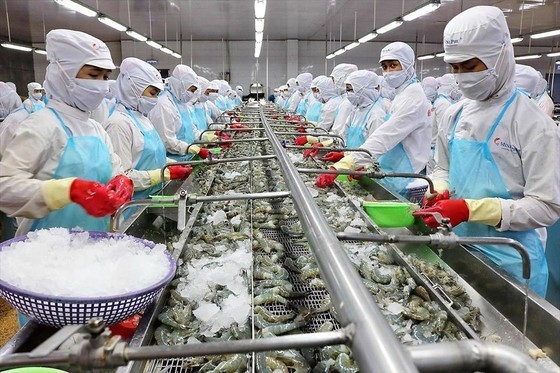The Vietnam Association of Seafood Exporters and Producers (VASEP) yesterday announced Vietnam's seafood exports during the first half of this year totaled US$5.2 billion, an increase of almost 19 percent against the same time last year.

Exports to the US amounted to $891 million, reflecting a 16 percent increase due to the expedited deliveries prior to July 9, when the US implemented new reciprocal taxes.
Since June, numerous businesses have halted exports to the US to mitigate the risk of incurring taxes. Nevertheless, the markets in China, Japan, Korea, and ASEAN sustained a growth momentum in June, rising from 15 percent to almost 28 percent.
VASEP forecasts two scenarios for seafood exports in the second half of 2025. In the first scenario, the US reciprocal tax after July 9 is 10 percent, then the total export turnover in 2025 could be around $9.5 billion, a decrease of $500 million compared to the previous forecast.
Other key markets including China, ASEAN member states, Japan, and the European Union, are well-positioned to absorb a portion of seafood products currently subject to regulations in the US. This diversification can help mitigate potential impacts from trade fluctuations and strengthen Vietnam's overall seafood export strategy.
In the second scenario, the reciprocal tax is over 10 percent, possibly up to 46 percent, seafood exports are at risk of a sharp decline to only $9 billion or lower. The US will no longer be a stable market, especially for products with complex supply chains. In the worst case scenario, competition from countries with lower taxes such as Ecuador, India, Thailand, and Indonesia will become more fierce.
Opportunities are expected to transition towards neutral markets like Japan, the EU, and ASEAN; however, the capacity to make up for this shift is constrained due to the global consumer demand still not having a robust recovery.
























